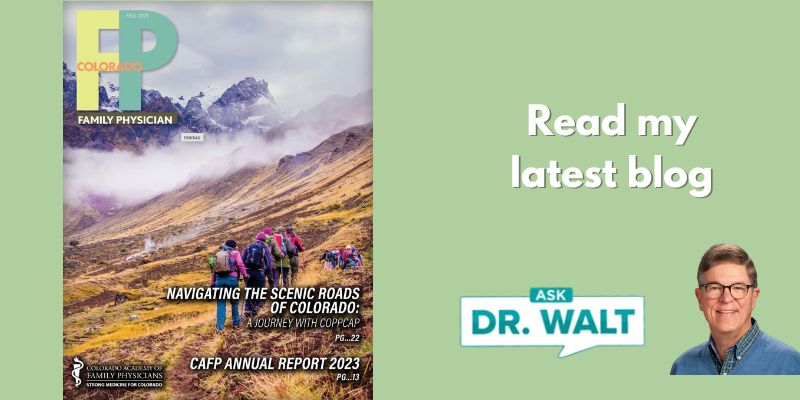How to Keep Normal Labor Normal – Part 11 – Payment
November 21, 2009Partnership Between Family Physicians and Coca-Cola Poses Ethical Problem
November 23, 2009Spare the Rod? Is Spanking a Child Harmful or Helpful? – Part 10 – Does spanking lead a parent to use harmful forms of corporal punishment which lead to physical child abuse?
Opposition to parents spanking their children has been growing significantly in elite circles over the past few years. And, my blogs on spanking are among the most read of those I publish. Therefore, I’ve decided to, with the help of the research of my friends Den Trumbull, MD, S. DuBose Ravenel, MD, look a the arguments used against spanking, to see if they hold any water. This is the eleventh of a 12 part series.
Counterpoint:
The abuse potential when loving parents use appropriate disciplinary spanking is very low. Since parents have a natural affection for their children, they are more prone to underutilize spanking than to overutilize it.
Both empirical data and professional opinion oppose the concept of a causal relationship between spanking and child abuse.
Surveys indicate that 70 to 90 percent of parents of preschoolers use spanking,[17] yet the incidence of physical child abuse in America is less than 5 percent.
Statistically, the two practices are far apart. Furthermore, over the past decade reports of child abuse have steadily risen while approval for parental spanking has steadily declined.[18]
More than 70 percent of primary care pediatricians reject the idea that spanking sets the stage for parents to engage in forms of physical abuse.[19]
Teaching parents appropriate spanking may actually reduce child abuse, according to Larzelere, in his review article on corporal punishment.[20]
Parents who are ill-equipped to control their child’s behavior, or who take a more permissive approach (refusing to use spanking), may be more prone to anger[21] and explosive attacks on their child.[22]
Parental child abuse is an interactive process involving parental competence, parental and child temperaments, and situational demands.[23] Abusive parents are more angry, depressed and impulsive, and emphasize punishment as the predominant means of discipline.
Abused children are more aggressive and less compliant than children from nonabusive families. There is less interaction between family members in abusive families and abusive mothers display more negative than positive behavior.
The etiology of abusive parenting is multifactorial with emphasis on the personalities involved, and cannot be simply explained by a parent’s use of spanking.
Finally, the Swedish experiment to reduce child abuse by banning spanking seems to be failing. In 1980, one year after this ban was adopted, the rate of child beatings was twice that of the United States.[24]
According to a report from the government organization Statistics Sweden, police reports of child abuse by family members rose four-fold from 1984 to 1994, while reports of teen violence increased nearly six-fold.[25]
Most experts agree that spanking and child abuse are not on the same continuum, but are very different entities. With parenting, it is the “user” and how a measure is used much more than the measure used that determines the outcome of the disciplinary effort.
Clearly, appropriate, loving spanking can be safely used in the discipline of young children with an excellent outcome. The proper use of spanking may actually reduce a parent’s risk of abusing the child.
Citations:
Here’s the entire series:
- Introduction
- Argument #1: Many psychological studies show that spanking is an improper form of discipline.
- Argument #2: Physical punishment establishes the moral righteousness of hitting other persons who do something which is regarded as wrong.
- Argument #3: Since parents often refrain from hitting until the anger or frustration reaches a certain point, the child learns that anger and frustration justify the use of physical force.
- Argument #4: Physical punishment is harmful to a child.
- Argument #5: Physical punishment makes the child angry at the parent.
- Argument #6: Spanking teaches a child that “might makes right,” that power and strength are most important and that the biggest can force their will upon the smallest.
- Argument #7: Spanking is violence.
- Argument #8: Spanking is an ineffective solution to misbehavior.
- Argument #9: Adults who were spanked as children are at risk for using violence as a means of resolving conflicts as adults.
- Argument #10: Spanking leads a parent to use harmful forms of corporal punishment which lead to physical child abuse.
- Argument #11: Spanking is never necessary.
You can read more of my blogs on spanking here:
- Is Spanking Associated with Child Abuse?
- The ABCD’s of Parenting – Part 7 – Discipline
- Spanking a Child – Is it Good or Bad?
By the way, an introduction is in order. Den A. Trumbull, MD is a board-certified pediatrician in private practice in Montgomery, Alabama. He is Vice President of the American College of Pediatricians. S. DuBose Ravenel, MD is a board-certified pediatrician in private practice in High Point, North Carolina. He served for 11 years on the pediatric faculty of the University of North Carolina School of Medicine prior to entering private practice.


